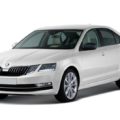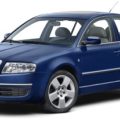Rapid prototyping | 3d systems
Rethink metal part design and produce products, components, and tools with reduced weight, increased functionalities, and simplified assemblies. Save time, cost, and part weight with an integrated precision metal manufacturing solution of software, direct metal printing technology, certified materials, and expert application support.
Rethink rapid prototyping | 3d systems
While additive manufacturing enables the production of more prototypes within a given time, it can reduce the amount of prototypes needed by enabling the industrial designer or engineer to more quickly dial in to a finished design. The digital design workflow also enables CAD data to be shared through a distributed network, where it can be quickly printed in different locations, enabling greater understanding of the design among teams and a faster knowledge turn. As knowledge improves so there can be faster, better and resultingly fewer iterations.
Rapid prototyping can reduce costs of product development and design by tens or hundreds of thousands of dollars through quick-turn iteration, reduced man-hours and a significantly reduced cost of prototyping through additive.
Summary
Prototype models help design teams make more informed decisions by obtaining invaluable data from the performance of, and the reaction to, those prototypes. The more data that is gathered at this stage of the product development cycle, the better the chances of preventing potential product or manufacturing issues down the road.
What is the best way to get a prototype made? The answer depends on where you are in your process and what you are trying to accomplish. Early in the design process, when the ideas are flowing freely, concept models are helpful. As the design progresses, a prototype that has the size, finish, color, shape, strength, durability, and material characteristics of the intended final product becomes increasingly important.
If your prototype can faithfully represent the attributes of the end-product, it is by definition functional. These requirements often include such things as material properties (e.g., flame resistance), dimensional accuracy for fit-up with mating parts, and cosmetic surface finishes for appearance.
If your prototype design can be repeatedly and economically produced in a manner that supports the requirements of the end product, it is by definition manufacturable. These requirements include the ability to maintain the functionality of the design as described above, keep the piece-part cost below the required level, and support the production schedule.
Finally, even if your prototype design is functional and manufacturable, it doesn’t mean anyone will want to use it. Prototypes are the only true way to verify the viability of the design in this sense. If your design can also pass the challenges associated with market trials (e.g., trade show displays, usability testing) and regulatory testing (e.g., FDA testing of medical devices), you’re well on your way to a successful product launch.
Definitions
Definitions vary and may differ at different organizations, but the definitions below may be used as a starting point.
Concept Model: a physical model made to demonstrate an idea. Concept models allow people from different functional areas to see the idea, stimulate thought and discussion, and drive acceptance or rejection.
Prototyping AttributesSpeed: turnaround time to convert a computer file into a physical prototype
Appearance: any visual attribute: color, texture, size, shape, etc.
Assembly/Fit Testing: making some or all of the parts of an assembly, putting them together, and seeing if they fit properly. At the gross level, this checks for design errors, such as placing two tabs at 2 in. spacing and the mating slots at 1 in. spacing.
Prototyping AttributesForm: the shape of the part: features and size
Fit: how the part mates with other parts
Functional Testing: seeing how a part or assembly will function when subjected to stresses representing what it will see in its actual application.
Prototyping AttributesChemical Resistance: resistance to chemicals including acids, bases, hydrocarbons, fuels, etc.
Mechanical Properties: strength of the part measured by tensile strength, compressive strength, flexural strength, impact strength, tear resistance, etc.
Electrical Properties: interaction of electrical fields and the part. This may include dielectric constant, dielectric strength, dissipation factor, surface and volume resistance, static decay, etc.
Thermal Properties: changes in mechanical properties that occur with changes in temperature. These may include thermal expansion coefficient, heat deflection temperature, vicat softening point, etc.
Optical Properties: ability to transmit light. May include refractive index, transmittance, and haze.
Life Testing: testing properties that may change with time and that are important for a product to remain functional throughout its expected life. Life testing often involves subjecting the product to extreme conditions (e.g., temperature, humidity, voltage, UV, etc.) to estimate in a shorter period of time, how the product will react over its expected life.
Prototyping AttributesMechanical Properties (fatigue strength): ability to withstand large numbers of load cycles at various stress levels.
Aging Properties (UV, creep): ability to withstand exposure to ultraviolet light with an acceptable amount of degradation; ability to withstand extended applications of forces to the part with acceptable levels of permanent deflection.
Regulatory Testing: testing specified by a regulatory or standards organization or agency to assure parts are suitable for a particular use such as medical, food service or consumer application. Examples include Underwriters Laboratory (UL)
Prototyping AttributesFlammability Properties: the resistance of a resin or part to ignition in the presence of a flame.





